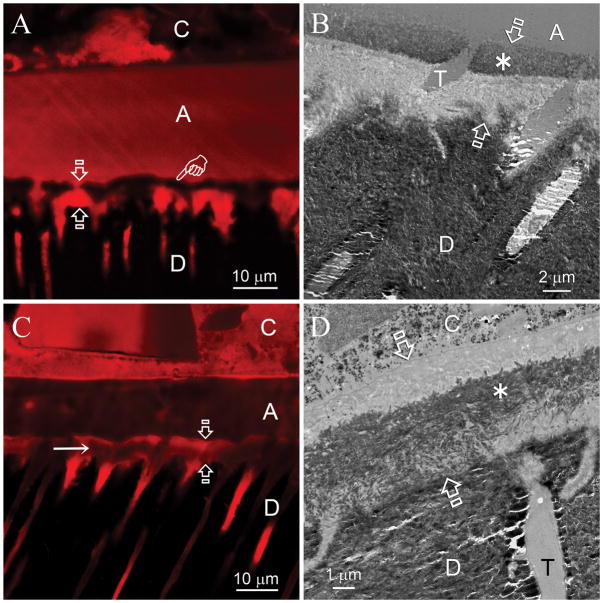Fig. 4.
Biomimetic remineralization in primary dentin was also observed along the surface (A,B) and the middle portion (C,D) of the hybrid layers, albeit less frequently. C: composite; A: adhesive; Between open arrows: hybrid layer; D: intertubular dentin, T: dentinal tubule. A. CLSM image of a specimen that had been immersed in the biomimetic remineralization medium for 5 months. Quenching of the fluorescence was predominantly observed from the surface of the hybrid layer (pointer). B. A corresponding TEM image taken from the 5-month old specimen. A 2–3 μm thick zone of remineralization (asterisk) could be identified along the surface of the hybrid layer. The mineral density of this remineralized zone was similar to that of the intact intertubular dentin. C. CLSM image of a 4-month old specimen. Reduction in the intensity of the fluorescence could be seen within the middle portion of the hybrid layer (arrow). D. A corresponding TEM image taken from the 4-month old specimen showing remineralization of the middle portion of the hybrid layer (asterisk).

